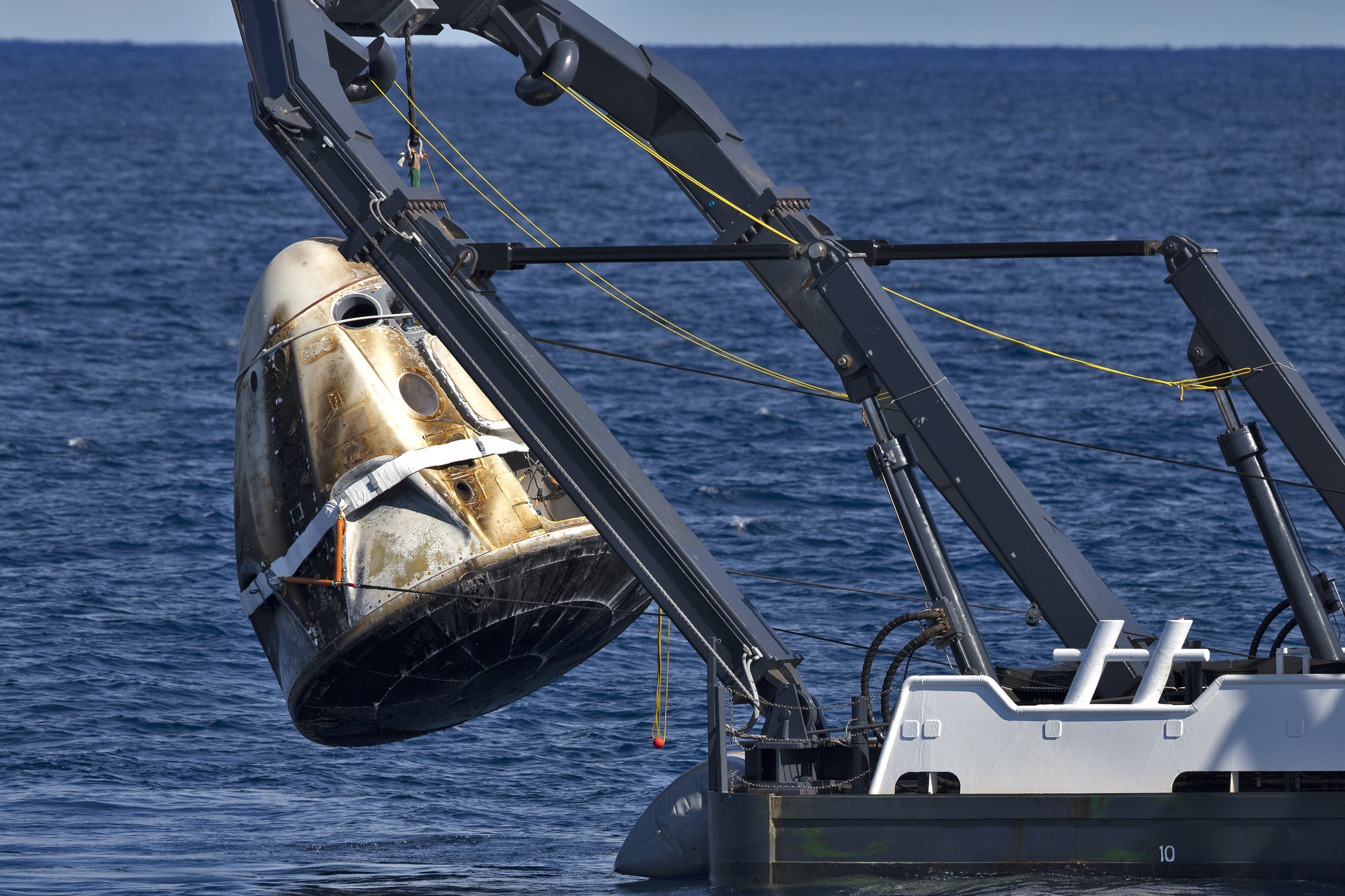
NASA anticipates having to buy yet more seats aboard Russian Soyuz spacecraft next year, according to media reports.
The three-seat Soyuz has been U.S. astronauts' only way to get to and from the International Space Station (ISS) since 2011, when NASA grounded its space shuttle fleet. NASA is counting on private U.S. craft to pick up the slack and has been encouraging these vehicles' development via the agency's Commercial Crew Program.
But this work has taken much longer than originally expected. In September 2014, NASA awarded $2.6 billion to SpaceX and $4.2 billion to Boeing to get their astronaut taxis — capsules known as Crew Dragon and CST-100 Starliner, respectively — up and running. At the time, agency officials said they wanted at least one of the capsules to be operational by the end of 2017.
Related: In Photos: A Behind-the-Scenes Look at SpaceX's Crew Dragon Spaceship
Crew Dragon flew a historic uncrewed demonstration mission to the ISS this past March. But that vehicle was destroyed in April during a test of its SuperDraco escape engines, setting SpaceX's crew-carrying timeline back. Starliner has yet to fly its first demo mission to the orbiting lab.
It's unclear when the next flights will be; NASA stopped publishing commercial-crew target dates in July, saying that timelines will be reevaluated after a new associate administrator for human exploration and operations is emplaced. (Bill Gerstenmaier, who had held this post for a decade, was reassigned in July.)
On Saturday (Sept. 28), during his annual update about SpaceX's Starship Mars-colonization architecture, SpaceX founder and CEO Elon Musk told CNN that Crew Dragon could be ready to fly astronauts in three to four months. But NASA Administrator Jim Bridenstine apparently is unconvinced; he expects that the agency will need to buy additional Soyuz seats in 2020, at $85 million a pop, CNN reported.
Get the Space.com Newsletter
Breaking space news, the latest updates on rocket launches, skywatching events and more!
Bridenstine also told The Atlantic that he's skeptical of Musk's timeline, stressing that Crew Dragon's redesigned launch-abort system still needs to be qualified and that the capsule's parachutes don't yet have the safety margin that NASA requires.
This back-and-forth between Musk and Bridenstine started on Friday (Sept. 27), when the NASA chief tweeted, "I am looking forward to the SpaceX announcement tomorrow. In the meantime, Commercial Crew is years behind schedule. NASA expects to see the same level of enthusiasm focused on the investments of the taxpayer. It's time to deliver."
Musk responded on Saturday, saying during his presentation that SpaceX devotes less than 5% of its resources to the Starship project and therefore hasn't taken its eye off the commercial-crew ball. He then directed some sass Bridenstine's way after the talk, during an interview with CNN's Rachel Crane.
When Crane brought up Bridenstine's tweet, Musk said, "Did he say Commercial Crew or SLS?" and then grinned playfully into the camera. SLS is NASA's Space Launch System rocket, which the agency is developing to launch astronauts toward the moon and Mars. The giant rocket is years behind schedule and billions of dollars over budget.
The Atlantic asked Bridenstine about Musk's response. "Well, I don't think that's helpful," the NASA chief said, adding that the agency wants all of its contractors to get back on schedule and under cost. (Boeing is the prime contractor for SLS's huge core stage.)
But calling the situation a feud would be going too far. Bridenstine told The Atlantic that he's a huge fan of Musk and called him "an amazing person."
"I want him to be successful," Bridenstine said. "I want to make sure that the partnership is strong, so I think our relationship is good. We've got hard work in front of us, and we need to get focused on that."
You can read the full CNN piece here and The Atlantic's interview with Bridenstine here.
I had a great phone call with @elonmusk this week, and I’m looking forward to visiting @SpaceX in Hawthorne next Thursday. More to come soon!October 3, 2019
- SpaceX's Starship and Super Heavy Mars Rocket in Pictures
- SpaceX Dragon Crew Demo-1 Test Flight: Full Coverage
- See the Evolution of SpaceX's Rockets in Pictures
Mike Wall's book about the search for alien life, "Out There" (Grand Central Publishing, 2018; illustrated by Karl Tate), is out now. Follow him on Twitter @michaeldwall. Follow us on Twitter @Spacedotcom or Facebook.

Join our Space Forums to keep talking space on the latest missions, night sky and more! And if you have a news tip, correction or comment, let us know at: community@space.com.

Michael Wall is a Senior Space Writer with Space.com and joined the team in 2010. He primarily covers exoplanets, spaceflight and military space, but has been known to dabble in the space art beat. His book about the search for alien life, "Out There," was published on Nov. 13, 2018. Before becoming a science writer, Michael worked as a herpetologist and wildlife biologist. He has a Ph.D. in evolutionary biology from the University of Sydney, Australia, a bachelor's degree from the University of Arizona, and a graduate certificate in science writing from the University of California, Santa Cruz. To find out what his latest project is, you can follow Michael on Twitter.









